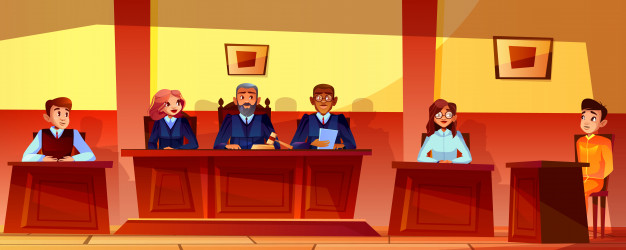Toddlers are dynamic little creatures. If you have ever had the opportunity to watch what a curious toddler does with their world, you’ll understand how neuroscience explains the processes that happen within the 3lb mass sitting inside of our heads.
Toddlers tend to point and label everything. Every….little…thing. It’s simultaneously cute but annoying. Not only do they label everything, but they also give it a color, sometimes a sound, a characteristic, and if you’re lucky, they will even play with this newfound object in their imaginary cosmos they have created.
As a 3-year old, this is adorable. At 42 years of age, this is not so cute — in fact, it borders on OCD, and depending on the context, can be racist, misogynistic, selfish, and unhelpful. But, here’s the frustrating thing — we all do it! All…of…us! It doesn’t matter where you got your degree, or even if you’re a neuroscientist — your brain is designed to pre-label, pre-package, and orient itself to the world outside.
One particular research project looked into how the brain creates maps of its environment. Their findings demonstrate that even though we might have different brains, the brain operates in a similar manner across most contexts. “The [brain] map is made of “semantic neighborhoods,” which are essentially just categories of things that the brain finds similar to each other. The researchers found that, for instance, the brain organizes the categories of “humans” and “animals” in a related manner, whereas “eyeball” and “car” are stored in completely different areas of the brain. Along with finding out how the brain organizes different categories of the object.”
The way we create maps of our environment is through our language — which is where we get the tools to give all objects labels. It’s this particular cortical demand that we must be wary of, mainly due to the fact that we can too easily allow our brain to think and automatically categorize things in our environment that might not pose any threat at all.
According to evolutionary psychology, we surmise that the reason why this overcategorization process evolved and adapted was to ensure we knew how to navigate new territories, find similarities in these novel environments, but also to get quicker at defining possible threats. The main issue with such a strategy comes down to hypervigilance — in that, our brain will separate through its many categories of melanin, rely on its in-group bias, and determine who is more valued than another.
We have many reasons that drive us to put each other into neat little boxes. Whether it be down to childhood rearing, social conditioning, religious beliefs, habits, and/or predicting current relationships on past experiences, categorization seems to be here to stay.
One theory, known as prototype theory claims we use categorization to justify stereotyping. “prototype theory. This idea is that animals average their experiences with disparate exemplars to form the schema, the prototype, the central tendency of the category. They compare new items to this averaged cognitive representation and include them in the category if they are enough as it [16,17,18]”.
Stereotyping is the generalization of others or their behaviors into presumptive little boxes that allow us to judge them. Categories suppress and oppress. They suppress the ones we’re trying to force into neat boxes to be anything other than what we have already assumed. They also allow us to prejudge their behaviors as being inherently a threat.
Many companies have certain in-cultures or secret nicknames, rituals, and/or behaviors that can make a new employee feel left out. Either a certain way of doing a process, secret acronyms, or things they assume the new employee should know to navigate the new office space. These only exacerbate a divide that should not be there in the first place. It turns a workplace culture into an unsafe territory for the new incoming employee to rely on their overcategorization, and to push the seasoned employees into their brains hypervigilance, and ultimately create a context where each set of individuals expects the worse out of each other.
This can be reduced by creating environments of radical curiosity — where each person is encouraged and rewarded to maintain a posture of ‘what if’ when meeting each other. What if this is a good person. What if they are my next best friend. What if they’re really good for the company. Presumptions can be manipulated to fit an empowering narrative, rather than a disempowering one. Gamify curiosity.
Build a work culture of novelty. Embrace creativity and innovation. Doing so will permeate through the relationship dynamics and encourage employees to think outside of the box which creates a reward-based neurostorm of chemicals that reinforce creativity which has been shown to down-regulate fear and anxiety. Which, by extension reduces the hypervigilant overcategorization.
Human behavior is weird. But, it has a purpose. We can be architects or victims of these discoveries. We can establish spaces in our lives and at work that encourages a much deeper understanding of neuronal limitations and re-appropriate their roles to our own end. To do so benefits all people involved. To do so creates a better workplace, and ultimately a better world.











Read 0 comments and reply